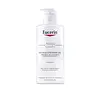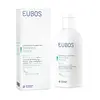What's inside
What's inside
 Key Ingredients
Key Ingredients

 Benefits
Benefits

 Concerns
Concerns

 Ingredients Side-by-side
Ingredients Side-by-side

Glycine Soja Oil
EmollientLaureth-4
EmulsifyingMipa-Laureth Sulfate
CleansingEthylhexyl Stearate
EmollientPEG-6 Caprylic/Capric Glycerides
EmulsifyingCocamide DEA
EmulsifyingLaureth-3
EmulsifyingCarthamus Tinctorius Seed Oil
MaskingParfum
MaskingPrunus Amygdalus Dulcis Oil
Skin ConditioningLaureth-9
EmulsifyingHexyl Cinnamal
PerfumingLactic Acid
BufferingBenzyl Salicylate
PerfumingLinalool
PerfumingCitronellol
PerfumingTocopherol
AntioxidantLimonene
PerfumingWater
Skin ConditioningBisabolol
MaskingChamomilla Recutita Flower Extract
MaskingGlycine Soja Oil, Laureth-4, Mipa-Laureth Sulfate, Ethylhexyl Stearate, PEG-6 Caprylic/Capric Glycerides, Cocamide DEA, Laureth-3, Carthamus Tinctorius Seed Oil, Parfum, Prunus Amygdalus Dulcis Oil, Laureth-9, Hexyl Cinnamal, Lactic Acid, Benzyl Salicylate, Linalool, Citronellol, Tocopherol, Limonene, Water, Bisabolol, Chamomilla Recutita Flower Extract
Ingredients Explained
These ingredients are found in both products.
Ingredients higher up in an ingredient list are typically present in a larger amount.
Glycine Soja Oil comes from the soybean. Glycine Soja is native to eastern Asia.
Soybean oil is an emollient. It is rich in antioxidants and fatty acids including palmitic, stearic, oleic, and linoleic acids.
As an emollient, the fatty acids in soybean oil helps keep your skin soft and hydrated. It does so by creating a film on top that traps moisture in.
Soybean oil is also rich in vitamin E, a potent antioxidant. Vitamin E is also anti-inflammatory and provides a soothing effect.
Studies show soy may help fade hyperpigmentation from UVB. It does so by disrupting the melanin process from UVB induced skin inflammation.
This ingredient may not be malassezia folliculitis, or fungal-acne, safe.
Soybeans are rich in proteins and are part of the legume family. Foods made with soybeans include tofu, soymilk, edamame, miso, and soy sauce.
Learn more about Glycine Soja OilLaureth-4 is created by reacting ethylene oxide with Lauryl Alcohol. It is a surfactant and emulsifier.
Surfactants reduce the surface tension of ingredients so they can mix better. Emulsifiers prevent ingredients such as oil and water from separating.
This ingredient comes from lauryl alcohol. It is an emulsifying surfactant and helps mix sold and liquid components.
Other names for this ingredient include Macrogol lauryl ether and Polidocanol.
Mipa-Laureth Sulfate is a type of sulfate.
Tocopherol (also known as Vitamin E) is a common antioxidant used to help protect the skin from free-radicals and strengthen the skin barrier. It's also fat soluble - this means our skin is great at absorbing it.
Vitamin E also helps keep your natural skin lipids healthy. Your lipid skin barrier naturally consists of lipids, ceramides, and fatty acids. Vitamin E offers extra protection for your skin’s lipid barrier, keeping your skin healthy and nourished.
Another benefit is a bit of UV protection. Vitamin E helps reduce the damage caused by UVB rays. (It should not replace your sunscreen). Combining it with Vitamin C can decrease sunburned cells and hyperpigmentation after UV exposure.
You might have noticed Vitamin E + C often paired together. This is because it is great at stabilizing Vitamin C. Using the two together helps increase the effectiveness of both ingredients.
There are often claims that Vitamin E can reduce/prevent scarring, but these claims haven't been confirmed by scientific research.
Learn more about TocopherolWater. It's the most common cosmetic ingredient of all. You'll usually see it at the top of ingredient lists, meaning that it makes up the largest part of the product.
So why is it so popular? Water most often acts as a solvent - this means that it helps dissolve other ingredients into the formulation.
You'll also recognize water as that liquid we all need to stay alive. If you see this, drink a glass of water. Stay hydrated!
Learn more about Water